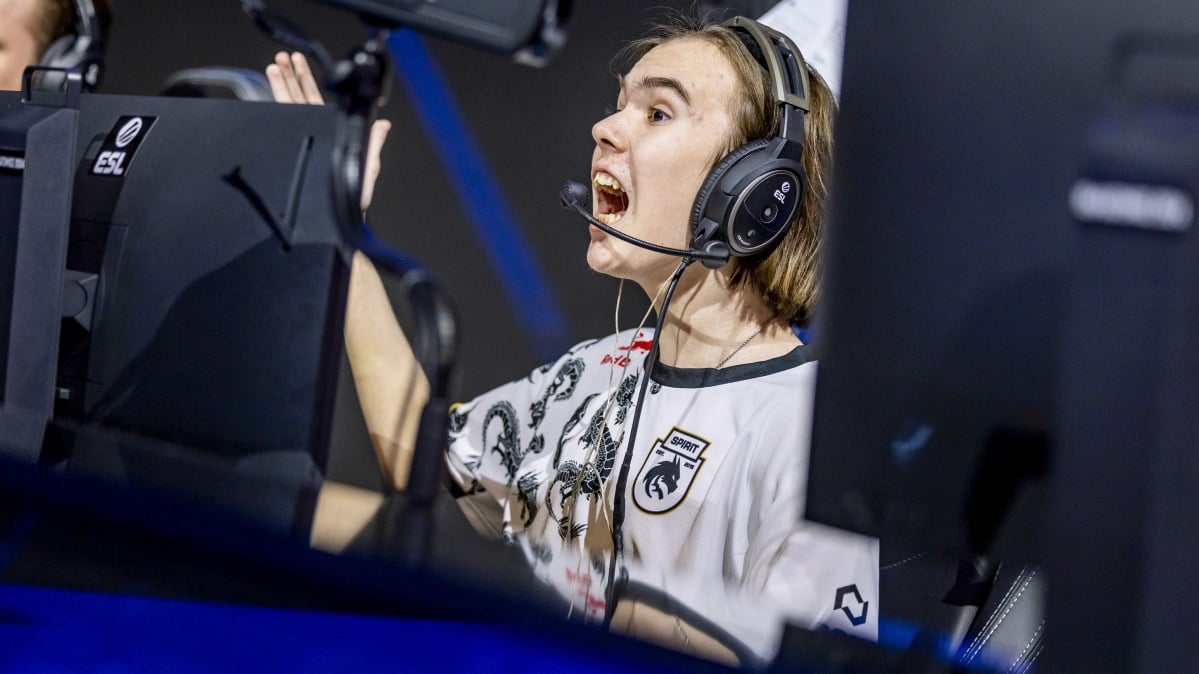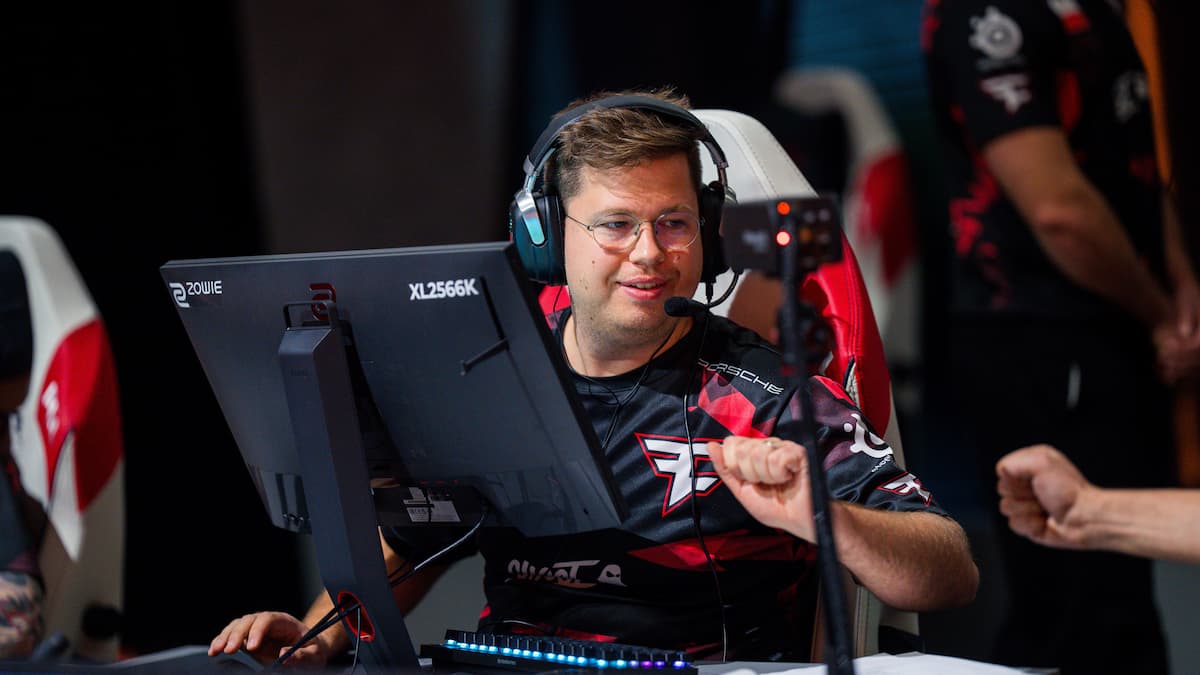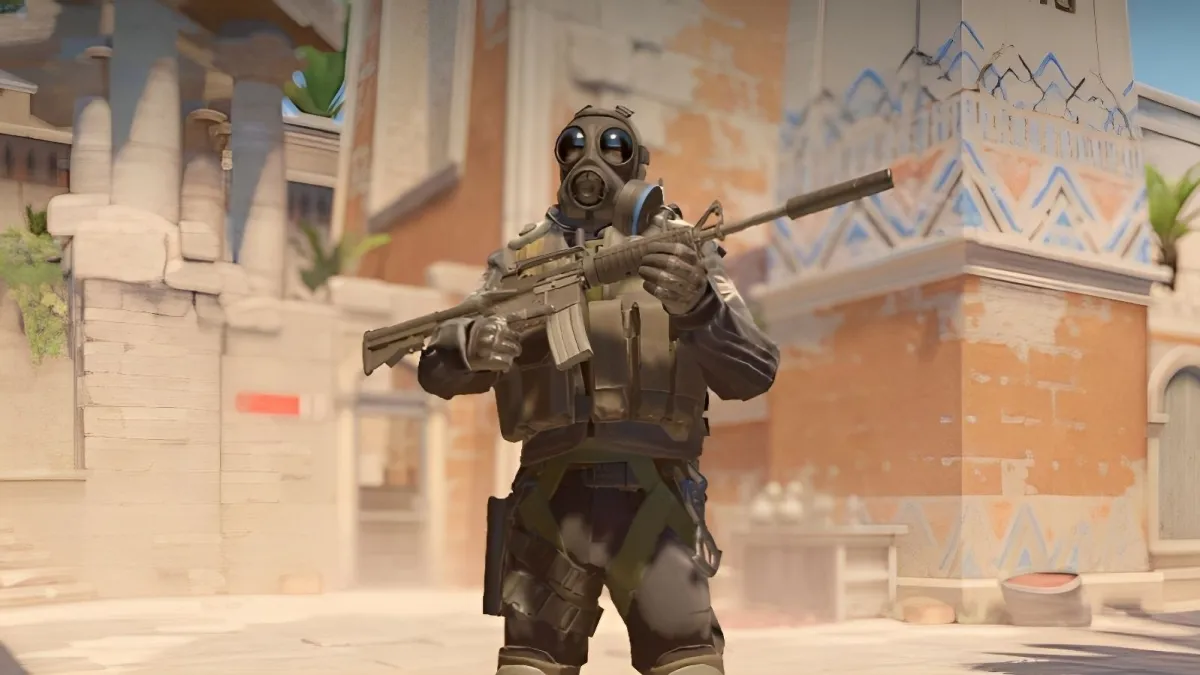
With today’s announcement of Fifflaren’s departure from Ninjas in Pyjamas, CS:GO’s greatest team of all line-up is no more. Despite the team having secured 22 titles and 29 finals appearances in their almost 27 months playing together, the last four months had seen the previously impossibly consistent NiP reduced to a side with only one significant title and finals appearance in six events. Even with that title being the only major title of their careers, NiP’s success had fallen faster and harder than anyone could have imagined. In this article, I’ll present the context and story-line behind NiP’s fall from the best team in the world to one which finished its final event with the only group stage elimination in its history.
The three phases of NiP
To understand just how difficult a period the last four months of NiP’s careers have been, one must look across the team’s entire 27 month history in CS:GO and examine the context of their previous successes and failures. Those 27 months can be neatly divided up into three different phases, each with their own core story-lines and prevailing themes. NiP goes from near unbeatable in the first phase to winning far less frequently but being incredibly consistent to the final stage of neither winning nor being consistent in the context of the top tier of CS:GO.
Phase one: Unbeatable (August 26th 2012 – September 15th 2013, 12.5 months)
18/20 titles (90.00%)
19/20 finals (95.00%)
20/20 top 4 (100.00%)
It is well known and celebrated that NiP began their CS:GO careers winning 87 straight maps offline without a defeat, collecting the first 10 titles at the first 10 offline events they attended, but that period of being unbeatable does cover the entire first phase of their history. NiP’s loss at SLTV StarSeries Season V, to Virtus.pro, may have made them shed blood for the first time, but it did not remove them from their perch atop the CS:GO world as the best team and the heavy favourite to win every single event they chose to attend. Extending the first phase through to September 2013’s Dreamhack Bucharest, NiP racked up a total of 18 titles out of 20 events attended, only failing to make the final once and finishing in the top four all 20 times.
Losses: 14 (over 20 events)
4 – mirage
3 – dust2
3 – nuke
2 – train
2 – inferno
During this time period, NiP were for all intents and purposes unbeatable, losing only to superhuman performances from their opponents and rarely at that. NiP were famously strong on all of the maps in the pool, allowing them to toy with opponents during the pick and ban phase of tournaments, going where opponents were weak or forcing them to ban out their worst map, at a time when every other team banned at least one map with regularity. Of NiPs 14 offline map losses during this period, they only failed to reach nine rounds on one occasion, showing just the kind of level the Swedish side demanded from an opponent in order to give up even a single map.
This NiP was the most dominant side CS:GO has and likely ever will see and even the occasional loss could not truly halt their onward march to more titles, more finals appearances, more top four finishes and more prize money. This was the golden age of CS:GO’s finest fivesome.

Phase two: Grinding consistency (October 13th 2013 – June 17th 2014, 8 months)
3/11 titles (27.27%)
9/11 finals (81.82%)
11/11 top 4 (100.00%)
Dreamhack Bucharest had given no sign that NiP could be deposed from the top spot in CS:GO, but the very next event, SLTV StarSeries Season VII would see VeryGames defeat NiP in both a map and a series for the first time offline. That event saw the French-Belgian side go on a three tournament run of beating NiP in Bo3, taking two titles and reaching the final all three times. That spree of excellence pulled NiP down from the number one ranking, as they would fail to win any international tournaments until six months later, when they took the Copenhagen Games 2014 title. During that time span, NiP had lost out in the final of the first two CS:GO majors.
Even with so few titles won, NiP still reached the final of all but two events over this eight month span and still never placed outside of the top four. This, again, points to only opponents playing the CS:GO of their life being able to truly strike NiP down. NiP would regain the number one by sheer virtue of no other team being able to match their consistency, meaning their Copenhagen Games and Dreamhack Summer titles staved off even the hottest of runs from the likes of fnatic, Virtus.pro and Natus Vincere.
Losses: 32 (over 11 events)
10 – inferno
9 – dust2
5 – train
3 – cache
2 – nuke
2 – mirage
During this era, NiP could still only be beaten by high level CS:GO from opponents, but the sheer number of opponents and losses increased massively from the first phase of their CS:GO careers. From 14 map losses over their first 20 events, NiP’s losing ways jumped up to 32 losses over only 11 events. Their inferno and dust2 quickly became the key maps on which they could be taken down, even if they still did maintain top win-rates on those maps also. Other map loss numbers remained similar, but inferno had shot up five times above what it had been in the first phase and dust2 went up by three times as much.
From failing to reach at least nine rounds in a loss only once in the first phase, the NiP of phase two failed to reach that mark in seven of their 32 losses. No longer were they losing games by close margins the majority of the time, they could now also be blown out by opponents or even choke entirely for a map, something unheard of in the first phase of their time together.

Phase three: Dark days without semi-finals (June 29th 2014 – October 31st 2014, 4 months)
2/6 titles (33.33%)
2/6 finals (33.33%)
2/6 top 4 (33.33%)
When looking at these numbers, it is first of all key to note that they actually are a little better looking than they should be. Even some of the smaller domestic titles in the previous two phases had significantly more overall competition than the IronGaming LAN NiP won in the USA, beating only Na`Vi of note. As a result, one could easy remove an event played and put these stats down to 20% across the board. Overall, that doesn’t bring NiP down an enormous amount from their previous rate of winning titles, having won three in phase two, but in a phase featuring less than seven events attended, one would expect the win-rate to be higher for events won, not lower.
In phase two, NiP had still made all but two finals at events they had attended, and never dropped below the top four. In this final phase, NiP only made one final of note, when they won ESL One Cologne, and that victory was their only top four finish at an event with more than one good team in attendance. It may seem bizarre, but NiP’s biggest overall event win, taking their first CS:GO major in Cologne, was the only moment of success they had during this final four month span.
Losses: 18 (over 6 events)
6 – inferno
5 – dust2
3 – cache
2 – cbblestone
1 – nuke
1 – overpass
From losing 32 maps over 11 events in the second phase, the last six events of NiP’s time together saw them amass a disasterous 18 losses. inferno and dust2 continued to be their problem maps, but it was not merely the number of losses or maps lost which was most worrying. Eight of those 18 losses saw NiP unable to reach the nine rounds won mark, one more than their number from the 32 losses in phase two.
This NiP were also not losing only to top teams, there was Swedish blood in the water and all manner of marine life was attracted by the scent of meatballs and herring. This NiP lost to 11 different teams over this four month span, going from top dogs down to top eight teams and reaching the depths of their loss to the practically unknown Platinium at ESWC. The last loss of NiP’s time together as a fivesome, indeed their final ever game, saw them smashed 16:1 by kennyS’ Titan side, who themselves would not break the top four.
The beginning of the end
From talking about NiP’s end, let’s head back in time to the beginning of the terrible third and final phase of their time together. Having won Dreamhack Summer, NiP headed to the ESEA Season 16 LAN finals as favourites and the world’s best CS:GO team. At the event, they were immediately upset by coL, who they had always managed to beat in previous encounters in BoX series. In the lower bracket, Virtus.pro would be the ones to eliminate them from the tournament, despite the Polish side being one which had seemingly been finally figured out by NiP, as they’d gotten revenge for the EMS One Katowice finals loss by beating NEO and company in the previous two Bo3 series. That elimination was the first time NiP had not finished in the top four of an offline event, snapping their 31 tournament streak.
Winning IronGaming was nice in as much as it granted them a second straight Bo3 series win over Na`Vi, who had beaten them at StarSeries IX a couple of months prior, but the event itself was far too small and insigificant to really affect much. Gfinity was the moment when NiP really began to free-fall. They struggled their way through the group stage, starting out with two close losses on dust2 and only got into the playoffs by virtue of a round difference tie-breaker rule. Avoiding being eliminated in the group stage for the first time in their careers, NiP faced a Bo3 with another team they had never been beaten by under such circumstances: Dignitas.
Having 2:0’d the Danish side at EMS One Katowice and Copenhagen Games, one might have expected this to be the moment NiP returned to the top, but instead it was a quick end, as they were put on the other end of a 2:0 series result, facing their second elimination outside of the top four. ESL One Cologne was only weeks afterwards, providing an opportunity to recover some form and stop their world ranking from finally slipping.
ESL One Cologne – The light at the end of the tunnel that turned out to be a train
 Having lost in the final of the previous two CS:GO majors, it might seem strange to suggest that NiP’s only CS:GO major title, winning ESL One Cologne, did not really halt their losing ways and problems, within the context of how they went about it. The NiP which had lost in the final of the previous two CS:GO majors had been the phase two NiP which could never be beaten before the semi-final of a tournament and still only gave up maps to top teams in peak form. That NiP had put on impressive performances right up until losing in those finals. The NiP which won in Cologne failed to impress right up to and even including their winning moment.
Having lost in the final of the previous two CS:GO majors, it might seem strange to suggest that NiP’s only CS:GO major title, winning ESL One Cologne, did not really halt their losing ways and problems, within the context of how they went about it. The NiP which had lost in the final of the previous two CS:GO majors had been the phase two NiP which could never be beaten before the semi-final of a tournament and still only gave up maps to top teams in peak form. That NiP had put on impressive performances right up until losing in those finals. The NiP which won in Cologne failed to impress right up to and even including their winning moment.
In the group stage, NiP were smashed by shox’s underwhelming Epsilon line-up on cbblestone, but still progressed to the play-offs. A hot C9 (formerly known as coL) seemingly should have taken NiP out for the second straight time in a Bo3, but NiP limped miraculously through a deciding cbblestone game, almost inexplicably. In the semi-final, another in-form team, Happy’s LDLC, again reached a third map against NiP only to lose in 14:16 fashion on the very same cbblestone. The final saw a similar story-line, but a little shifted around, as NiP beat the new look FNATIC team on the opening map, this time cbblestone, to ensure the series would last at least three maps. This time, the final map was inferno, their trouble map seemingly forever, and NiP overcame late on to steal the victory and the title.
Despite being the greatest CS:GO team of all time, NiP essentially won ESL One Cologne as an underdog side somehow pulling miracle rounds and map results from the void, with nothing to suggest such wins were possible. They may have been the best team to ever play the game, but this fluke event win ranked up there with fnatic’s Dreamhack Winter run and Clan-Mystik’s ESWC steal. Firstly, the introduction of the new competitive map cbblestone clearly helped NiP along that miraculous run. After their initial loss on it, they won all three instances in the play-offs and it ensured they had a chance to close out series. It’s hardly even disrespectful to say that, to some extent, NiP won ESL One Cbblestone that week.
Secondly, NiP won three straight Bo3 series in which it could argued, taking the series as a whole and not just individual maps, that their opponents were the team in better form and even played better round-to-round than NiP. NiP had no consistency on the maps outside of cbblestone, losing nuke, their home map forever in CS:GO, in the opening series, inferno in the semi-final and cache in the final. Without cbblestone, NiP would have had no solid place to go for a guaranteed map win in the series, putting them in real danger of losing each series.
Finally, NiP managed to win ESL One Cologne with 144 total rounds won, but 147 lost. A key point of context, also, is that one of NiP’s wins in the group stage came over a team invited from India, considered by far the weakest team in the entire competition and in the history of the CS:GO majors. That rounds won to lost statistic alone shows the kind of incredible good fortune that NiP had to find and create in order to survive through to be the ones hoisting their first ever CS:GO major title trophy at the end. It was a gusty, gritty, ballsy and exciting run, but it was far from convincing, dominating or impressive.
The bitter end
That ESL One Cologne victory allowed NiP some breathing room, as the line-up had shown it could win, albeit by the barest of margins, and thus the Fifflaren era of NiP could hope for a better run of finishes to bring them back into truly elite status. Instead, this ESL win really did mark the end of NiP the championship side. It’s as if they had summoned all their remaining vitality and force to win that major that their trophy cabinet so desperately missed, but then that found themselves sapped and with nothing left to give.
A month after ESL, NiP withdrew from the online portion of ESEA Season 17, having won only two out of their six games. On the 25th of September, they came into their home town Dreamhack Stockholm only to fail to reach the play-offs for the third time in their careers, being crushed flat by the new LDLC and losing a heart-breaker to a new Titan side. Five days later, they were eliminated in the online portion of StarSeries XI, meaning they would miss the LAN finals.
On October 10th, their FACEIT League EU Season 2 campaign closed with them at a 7:7 record and missing the LAN finals of another event. That trend would continue for a four online competition, as on the 14th NiP fell in three maps to FNATIC online and barely missed a spot at the Fragbite Masters S2 LAN finals. The month would end with the nightmare of ESWC, going up two wins only to lose the last three games and be eliminated from the competition in the group stage. That NiP’s time together finished with a loss to Titan, featuring some of the core players who had been their first rivals and who they had constantly beaten up on in phase one of their careers, really spelled the bitter and disappointing nature of their end.
While many may look back suggest NiP should have had their line-up go out on a high, perhaps with Fifflaren retiring after lifting that ESL One Cologne trophy, it has always been a core principle I’ve held to that great line-ups should not break up until they know they have no more titles in the tank. With this run of events following ESL, NiP could be convinced that they had in fact drained that tank to the bone. There was no need of attending Dreamhack Winter, it was by now entirely unreasonable to imagine they could have won it and the gamble of trying a new player out for the event provides a much more convincing upside than hoping for one more miracle with Fifflaren.

The next phase begins soon
With Dreamhack Winter, the fourth CS:GO major in history, scheduled for the end of November, the world awaits NiP’s announcement of who will replace Fifflaren. I addressed that topic myself today in a video outlining the kind of names who will be on their minds.
Photo credit: fragbite, ESL






Published: Nov 3, 2014 03:24 pm